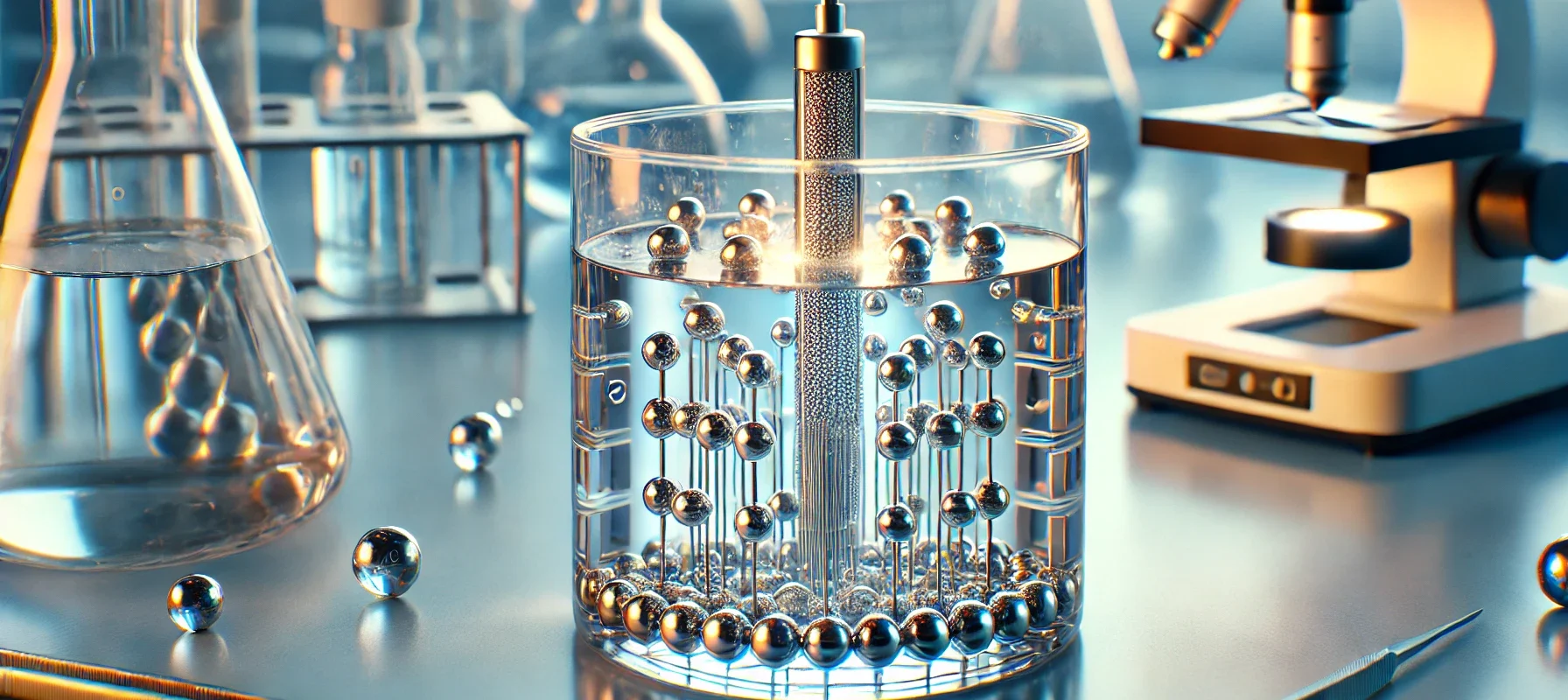- Construction and Working of Reference electrodes are half-cells with a stable and well-defined electrode potential.
- These electrodes are used to provide a constant potential against which the potential of other electrodes can be measured.
- Common reference electrodes include the Standard Hydrogen Electrode (SHE), Silver-Silver Chloride Electrode (Ag/AgCl), and Calomel Electrode.
1.Standard Hydrogen Electrode (SHE) as Construction and Working of Reference Electrodes
Construction:
-
- The SHE consists of a platinum (Pt) electrode that is coated with platinum black to increase its surface area.
- This electrode is immersed in a solution containing H⁺ ions (usually a 1 M HCl solution) and hydrogen gas (H₂) is bubbled over the platinum electrode at a pressure of 1 atm.
- The entire system is maintained at a temperature of 25°C.
Working:
-
- The SHE is based on the half-reaction:
- 2H+(aq) + 2e− ⇌ H2
- At the platinum electrode, hydrogen gas is either oxidized (loses electrons) or reduced (gains electrons), depending on the direction of the electrochemical process.
- The potential of the SHE is arbitrarily assigned as 0.00 V under standard conditions (25°C, 1 atm, 1 M H⁺). It serves as the universal reference point to which other electrode potentials are compared.
2. Silver-Silver Chloride Electrode (Ag/AgCl) as Construction and Working of Reference Electrodes
-
Construction:
- The Ag/AgCl electrode consists of a silver wire coated with silver chloride (AgCl).
- This wire is immersed in a solution of potassium chloride (KCl) of a known concentration.
- The electrolyte is saturated with KCl, and the reference potential is dependent on the concentration of chloride ions (Cl⁻).
-
Working:
- The electrode operates based on the equilibrium:
- AgCl(s) + e− ⇌ Ag(s) + Cl−(aq)
- The potential of this electrode depends on the chloride ion concentration in the solution. The potential is well-known and constant for specific chloride concentrations.
- For a saturated KCl solution, the standard potential of this electrode is around +0.197 V versus SHE.
Advertisements
3. Calomel Electrode
-
Construction:
- The calomel electrode consists of mercury (Hg) in contact with mercury(I) chloride (calomel, Hg₂Cl₂).
- This assembly is immersed in a potassium chloride (KCl) solution of known concentration (saturated or unsaturated).
- A porous salt bridge connects the electrode with the solution being measured to maintain electrical neutrality.
-
Working:
- The calomel electrode works based on the half-reaction:
- ${Hg_2Cl_2\ (s) + 2e^- 2Hg\ (l) + 2Cl^-_{(aq)}}$
- The potential depends on the concentration of the KCl solution. For a saturated KCl solution, the electrode has a potential of approximately +0.244 V versus SHE at 25°C.
- This electrode is widely used because of its stable potential and ease of preparation.

